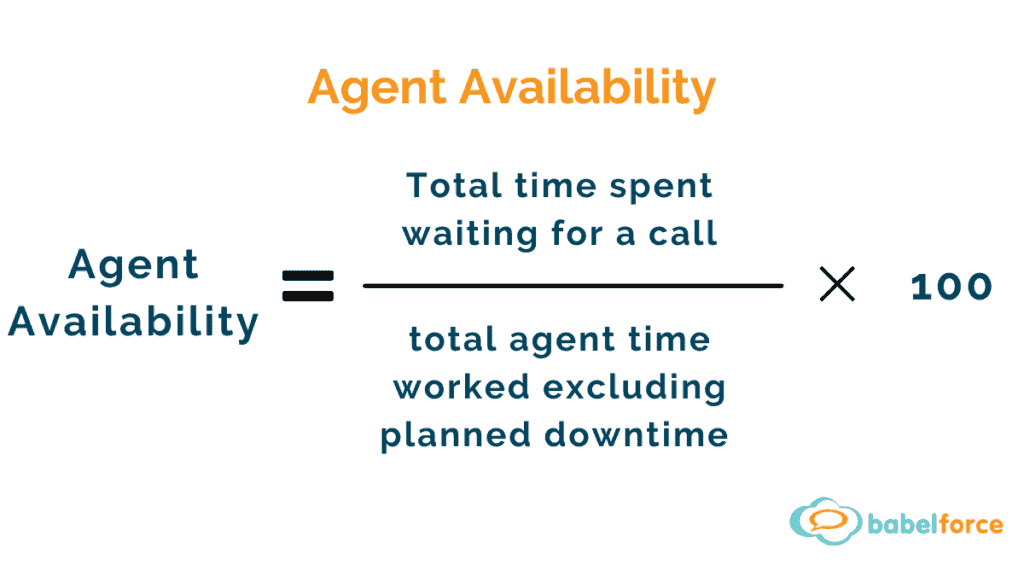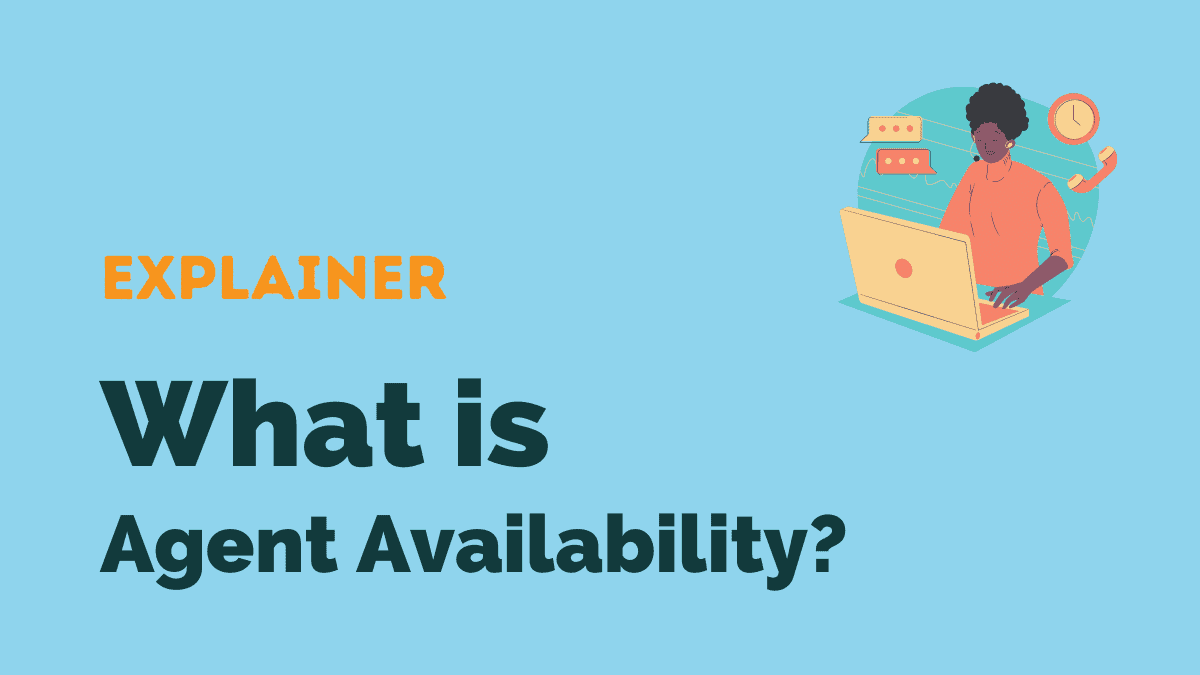In this post:
- What is agent availability?
- How can you measure agent availability?
- Why is agent availability important?
- What is the ideal agent availability for a contact center?
Call centers measure many KPIs (key performance indicators) to help them understand how well they are handling customer interactions and identify opportunities for improvement. One KPI you may (or may not) have heard of is agent availability. Let’s break down this term and explore why it matters for contact centers.
(Want more articles like this in your inbox? Click here to get our fortnightly CX newsletter.)
What is agent availability?
In an ideal world, every time you call a contact center to raise an issue, an agent would be available to pick up 100% of the time. However, in the real world, this often isn’t the case.
If a contact center wants to assess how many agents are available and waiting to speak to customers on average, they would measure their agent availability. In other words, this metric looks at the percentage of time that agents are available and ready to take calls during their shift.
Modern call center software can provide insight into agent availability to indicate whether someone is available to handle a call or customer interaction. Agents can adjust their own status, or it can be set to automatically adjust based on their activity. This means only the ‘available’ agents can take on a new customer request, which helps improve both agent efficiency and customer satisfaction.
How can you measure agent availability?
The most common way to measure agent availability is to take the amount of time agents are sitting available to take a call and divide it by the amount of time staff are logged into phones. For this metric to be accurate, you have to exclude time spent on after call work (ACW), breaks, training or any other admin duties. Unless an agent is literally sitting at their desk available to take a call, then that time doesn’t count.
You can use the following formula to calculate agent availability as a percentage:

Why is agent availability important?
You can probably see why a lack of available agents would be a problem for contact centers. If customers are waiting on hold, that means they are not able to speak to an agent and resolve their issue. This can lead to frustration and may even cause customers to hang up without a solution.
There are many factors that can affect an agent’s availability, such as the time of day, the type of call, and the number of agents on staff. Often, customers have to wait on hold for a period of time before they can speak to an agent. If this wait time is too long, it can result in a poor customer experience.
It might also have a negative knock-on effect on other key metrics and KPIs such as:
- Average time in queue
- Average speed of answer
- Call abandonment rate
- Customer satisfaction score
- Estimated wait time
There’s another factor in the agent availability equation that call center managers sometimes miss. Supervisors might see idle agents as a waste of resources. However, if you have zero agent availability, it means your agents are taking calls back to back. The contact center industry is already plagued by high employee churn rates, and if agents are constantly on the phone with no break in between calls, that can lead to even more burnout.
What is the ideal agent availability for a contact center?
Unfortunately, there is no magic number when it comes to the ideal percentage of agent availability for a contact center. Your available agents are a failsafe in case of high call volume. But if you have too many agents available, you’re likely overstaffed. Alternatively, if there are too few agents, your contact center is going to struggle to handle a sudden spike in calls.
It’s important to strike a balance and have enough agents available to meet demand without having too many idle agents who aren’t doing anything. The percentage of agent availability will vary from contact center to contact center, and it is something that you will need to experiment with to find what works best for your business.
Smaller contact centers can easily increase or reduce their agent availability with just one or two staff members, but for larger call centers with hundreds of staff, adjusting agent availability could be a bit more demanding.





